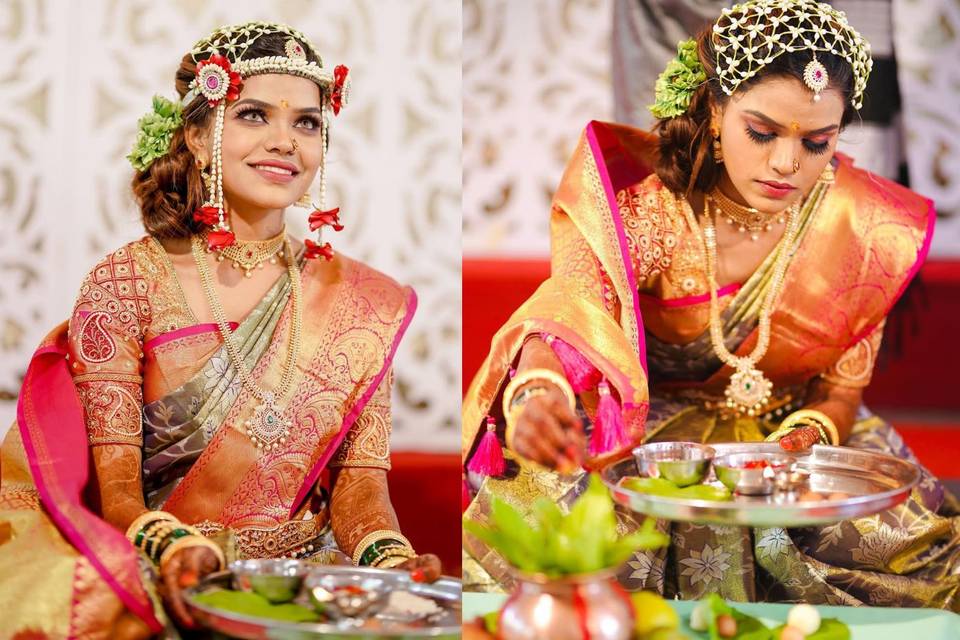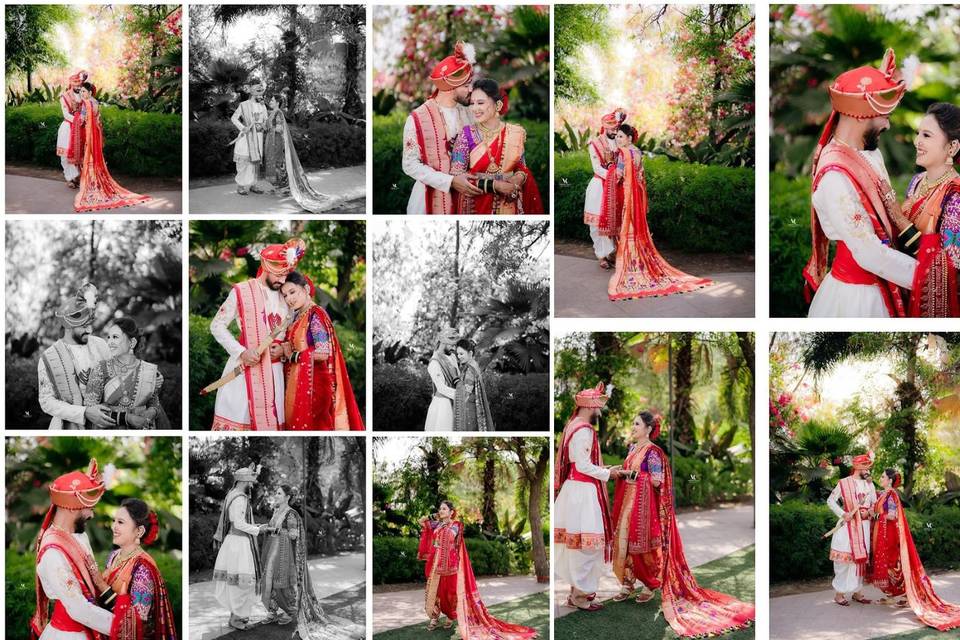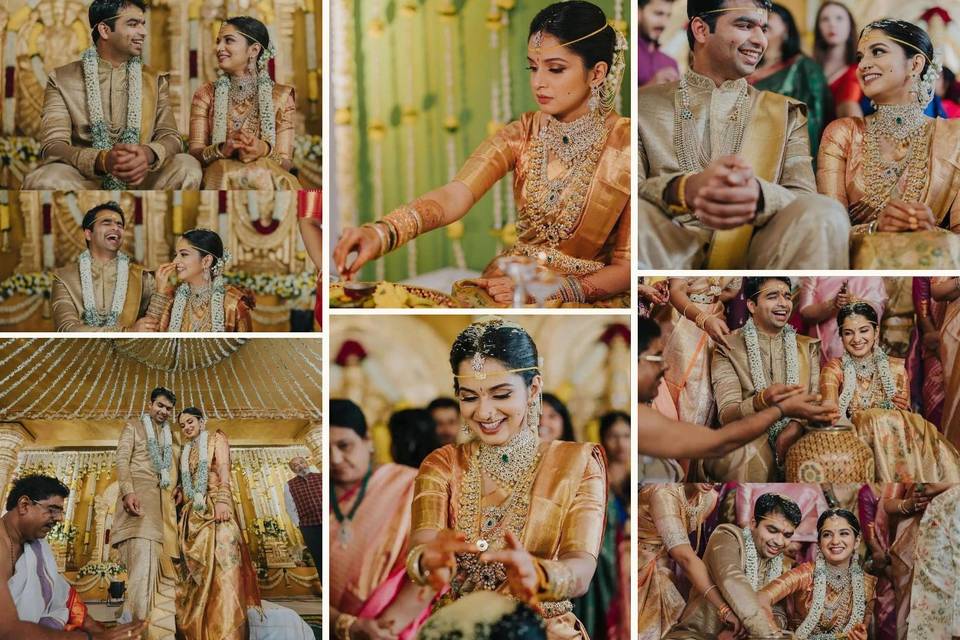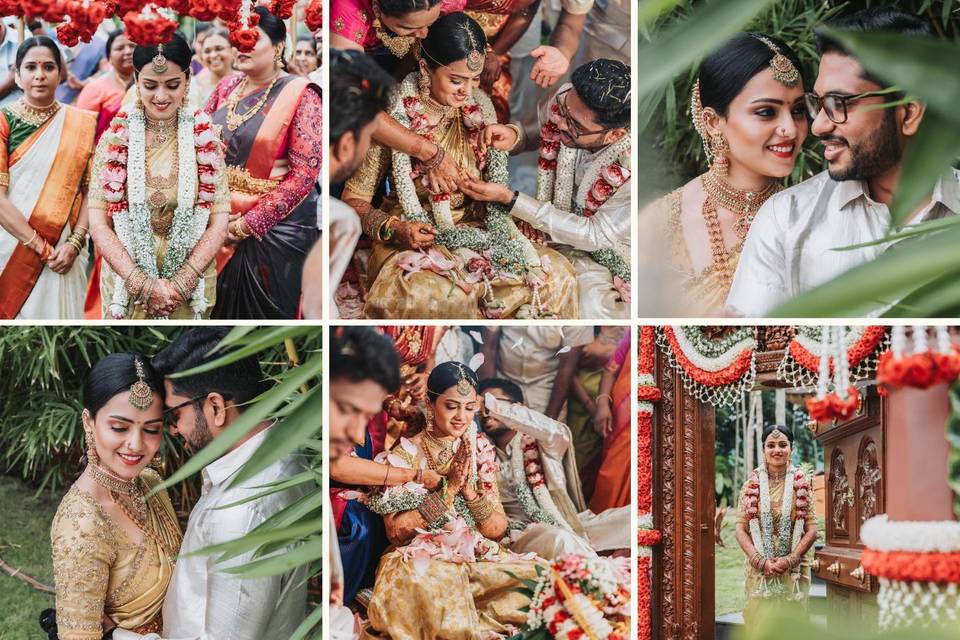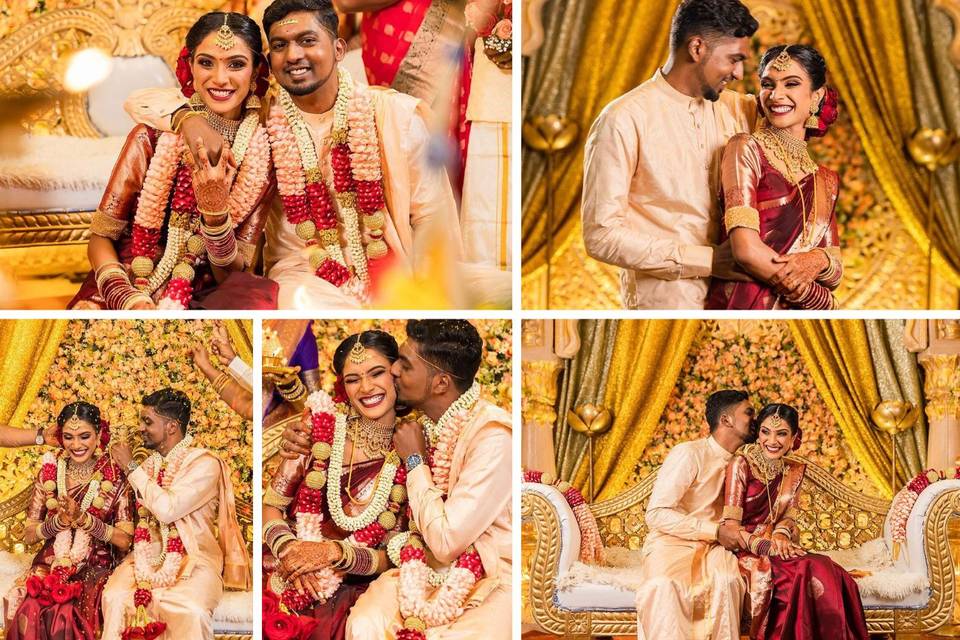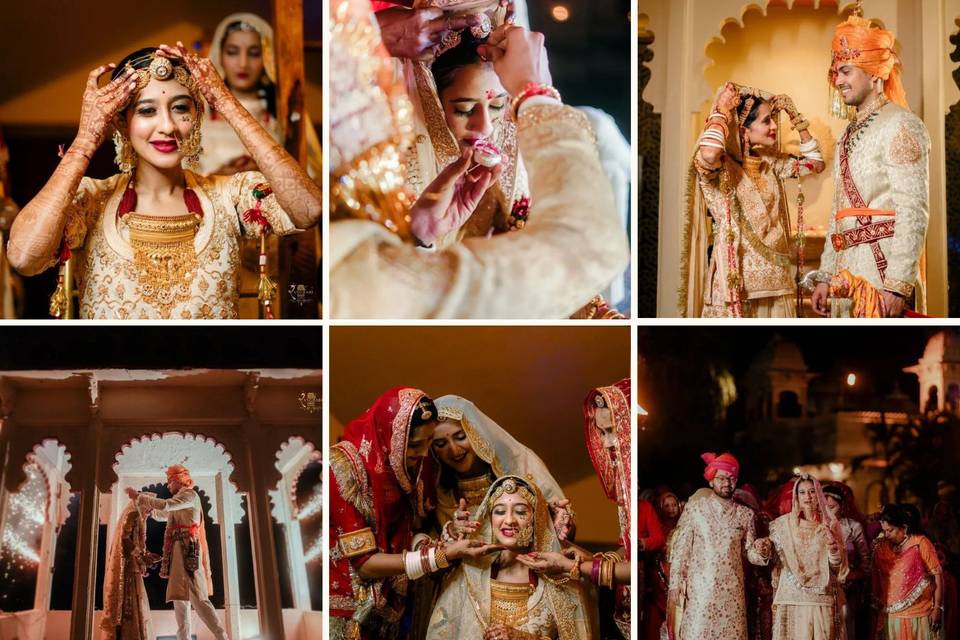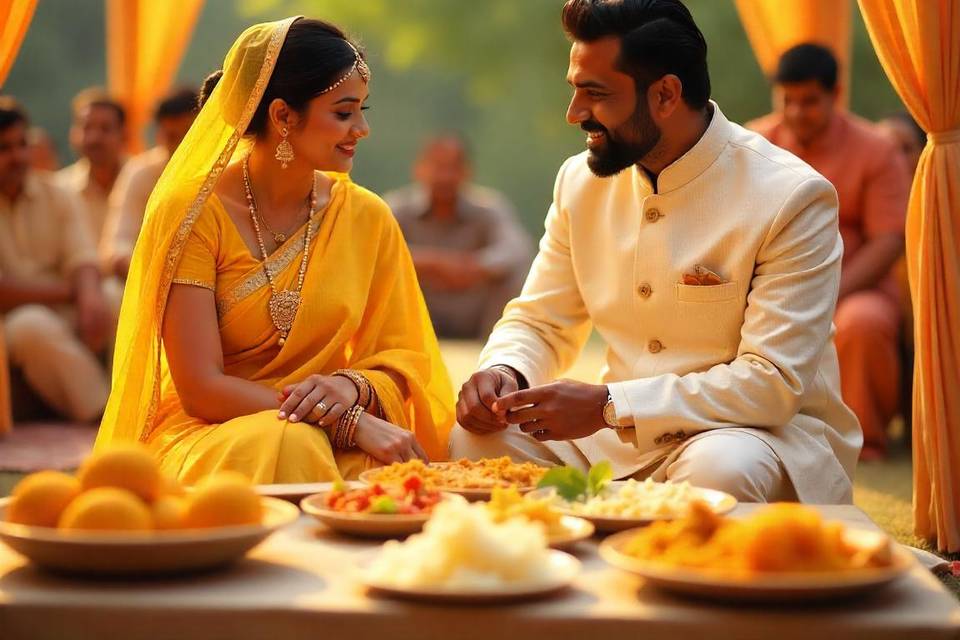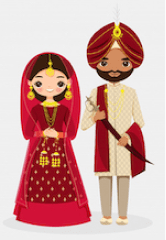Decoding Parsi Wedding: String of Traditions & Ceremonies
A Parsi wedding is known for its simplicity & commitment to traditions & rituals. Read on to know more about the breathtaking & fun Parsi wedding traditions.
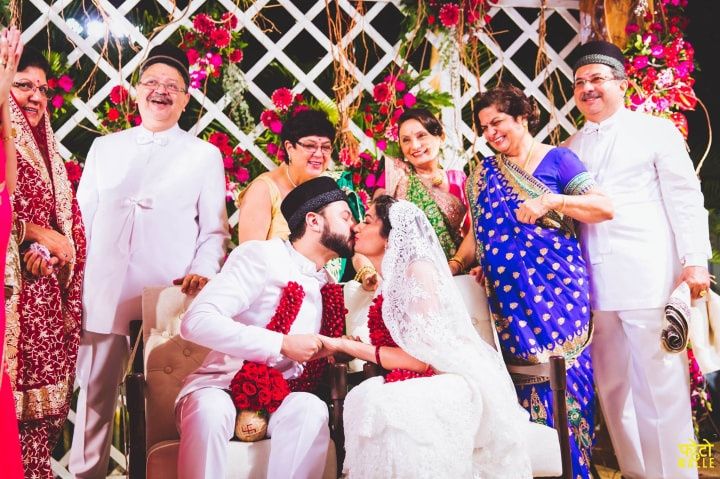

Blooming hues of red and white set the tone for a Parsi wedding, far away from the flashy and OTT wedding spirit of the grand Indian wedding affair. Steeped in Zoroastrian culture, the simplicity of a Parsi wedding is almost mesmerising.

Image Courtesy: Parinaz Irani
In this piece, we explore how the ‘Lagan’, set in a garden of the fire temple is an interesting bundle of customs, both fun and spiritual. Let these be inspirations for when you plan your wedding.
Pre-Wedding Parsi Traditions
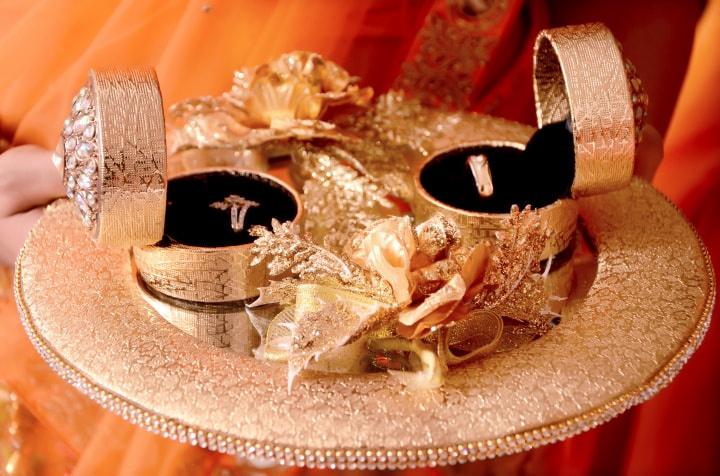
Though largely austere in the show, a Parsi wedding has multiple ceremonies to make up for them. Even if the couple is engaged already, a formal engagement is hosted by the families to celebrate the union and the Parsi bride is ideally supposed to wear red. Here is how a couple get hitched the Parsi way.
Rupia Peravanu
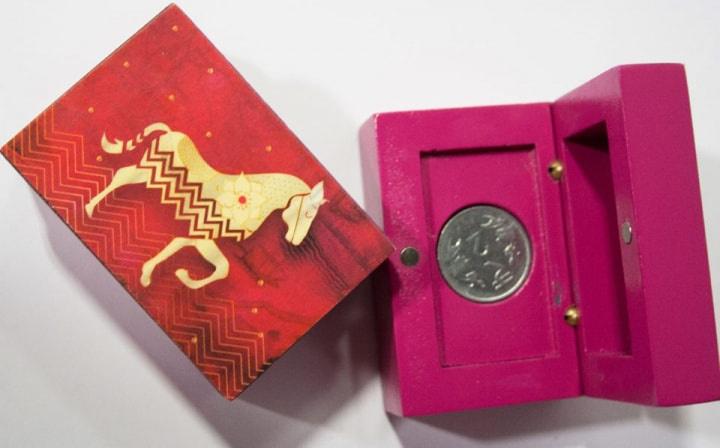
Rupia Peravanu is when the female folk of the bride’s side visit the groom and the ladies from the groom’s side visit the bride bearing Shagun, gifts and a silver coin. This is believed to bring in prosperity and luck for the two members in their new phase of life.
Madhavsaro
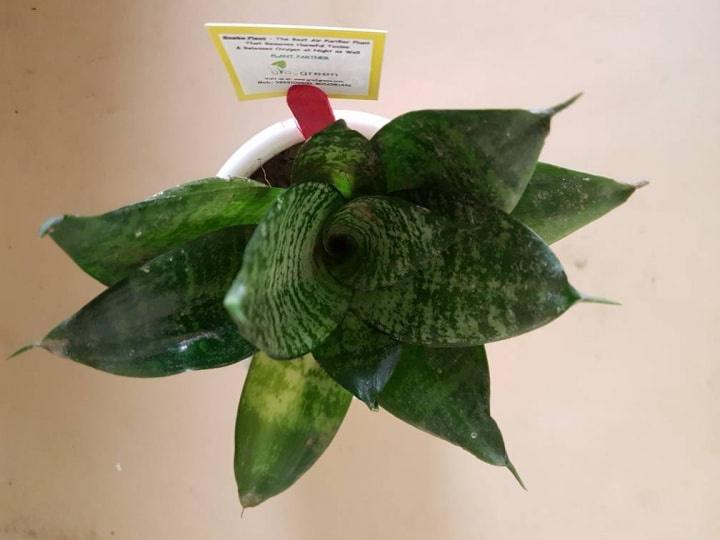
This is a special ceremony in a Parsi wedding in which the bride and the groom’s family plant a sapling in a flower pot as a symbol of fertility. This plant is placed near the entrance of the house where it is nurtured and watered every day. 7-8 days after the wedding, it is removed from the pot and given a permanent home.
Divo Adarni
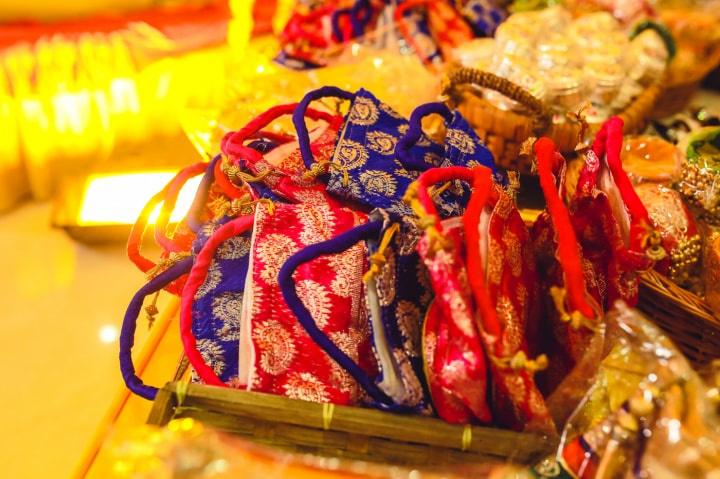
In the ritual of Divo Adarni, the groom’s family visits the bride house bearing gifts of clothes, cash and jewellery for her. After the ritual is completed the bride’s family offers simple treats like Sev and Dahi, bananas and boiled eggs to the guests.
Supra Nu Murat

In a Parsi wedding, Supra Nu Murat is the equivalent of the colourful Haldi ceremony. Five married women sit in a circle and take turns pounding a special bundle of betel nut, betel leaf, dates, turmeric and a piece of coconut, which together form Supra. This turmeric paste is then applied to the groom and the bride by their respective family members.
Nahan
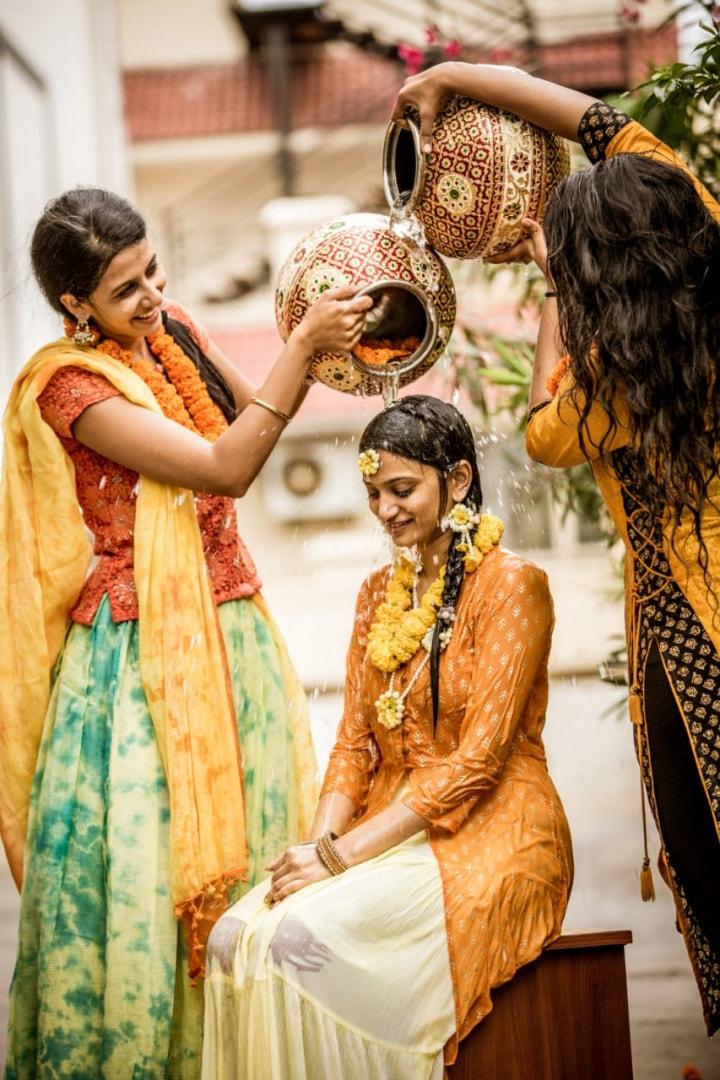
This sacred ritual is performed before the Parsi wedding in which the bride and the groom take a holy bath to cleanse and purify their body and soul. The completion of this ritual marks the commencement of the wedding day ceremonies.
Getting Ready For A Parsi Wedding

After the Nahan, the bride and the groom proceed to get ready for their big day. The special day calls for a special attire for both.
For the bride
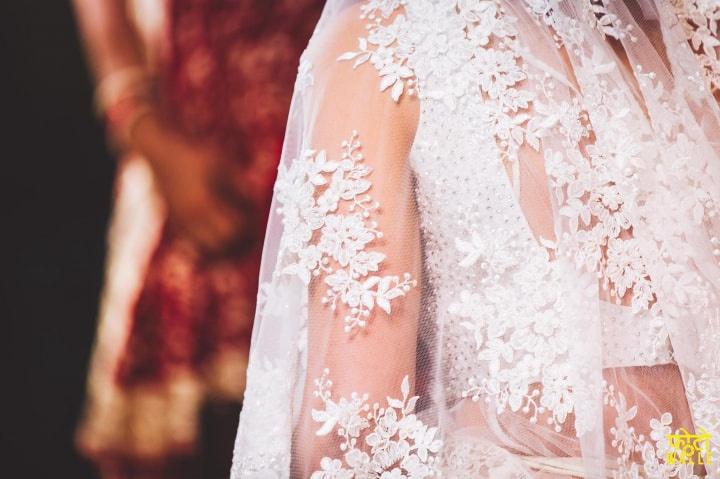
The bride adorns a white ornate silk or chiffon Saree, traditionally called as the Parsi Gara. These sarees are heirlooms, passed down one generation to the next. They are gorgeously in aesthetic and admirably comfortable in wear. The saree is delicately draped to cover the head with one end during the wedding ceremony.
Like the ensemble, the jewellery isn’t too OTT either. She adorns simple jewellery pieces that are a family heirloom along with the auspicious red bangles gifted by her mother-in-law.
For the groom
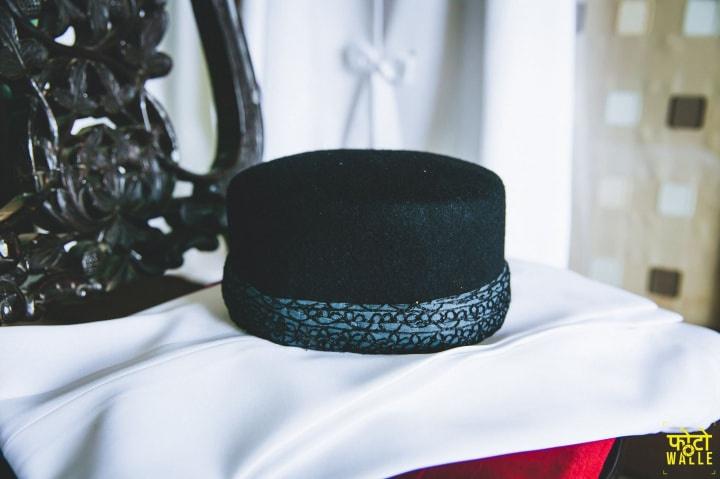
The groom attire complements the divine simplicity of her bride. He adorns a Parsi Dagli, a white overcoat, and Fetah which is the long black traditional Parsi hat. The attire is completed with a white cotton short Kurta and an off-white shawl on his shoulder. Black formal shoes bring the whole outfit together.
Parsi Wedding Traditions

Image Courtesy: Parinaz Irani
Ready for the big day? These are the ceremonies which solemnise a Parsi wedding ceremony:
Achu Michu
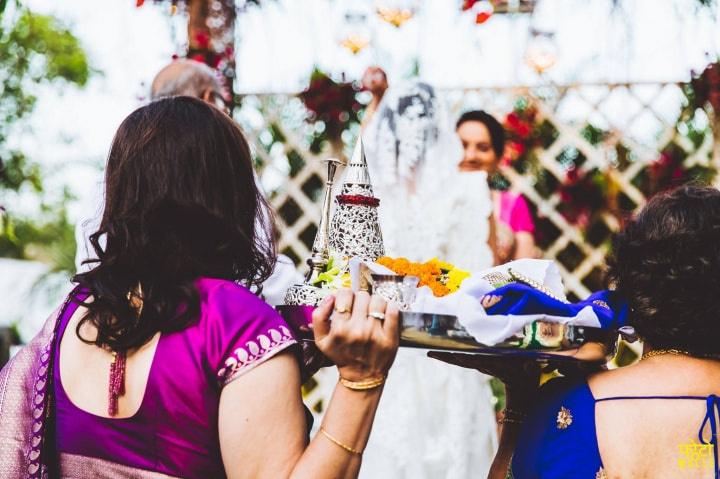
Achu Michu is the first of all the wedding day rituals and is performed by both the families to ward off any evil vibes that might have found their way to the bride and the groom. In this, the bride’s mother takes raw eggs, coconut, rice and dates to ward off her son-in-law against the evil eye. She also sprinkles water on his either side to complete this ritual and after that, it’s the groom’s mother’s turn to do the same for her daughter-in-law.
Ara Antar
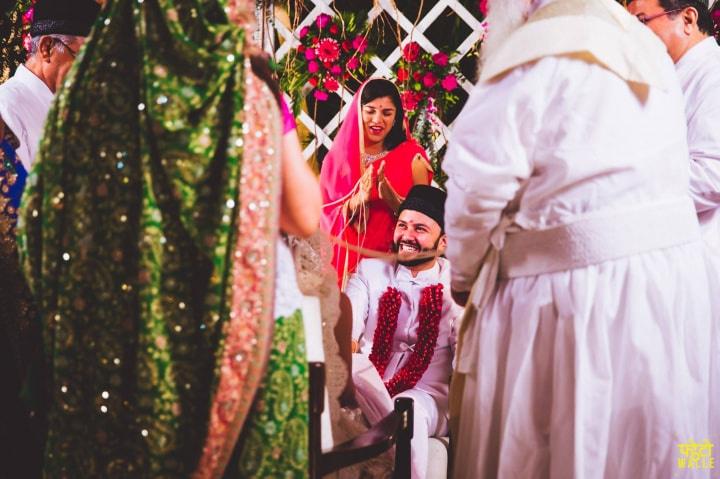
To perform this ceremony, the bride and the groom sit facing each other with a white cloth Parda between them. There are seven married women who circle around them with a white thread seven times after which the bride and the groom shower grains of rice at each other from over the Parda that is given to them by their mothers. Whoever does it first is believed to be the one to rule the household! The Parsi priest chants prayers in Persian all along with the ceremonies.
Chero Bandhavano
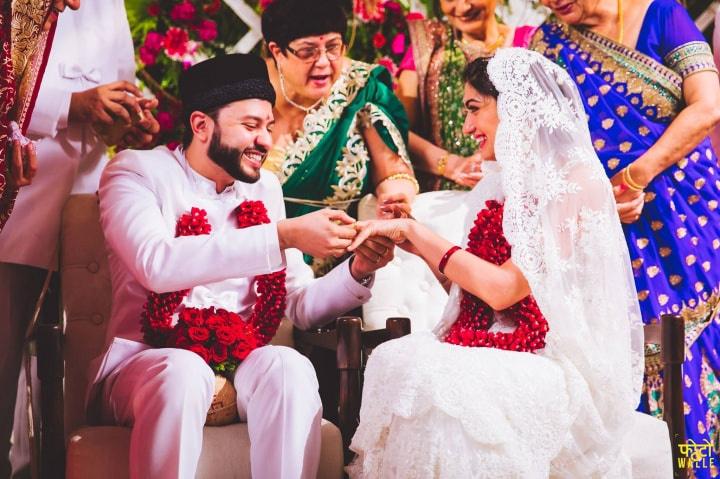
After the wedding ritual, the bride and the groom sit next to each other with oil lamps lit on their either side. The priest begins the prayers and completes other rituals to officiate the Parsi wedding. And then the couple exchange wedding rings to mark an end to the wedding rituals.
Everybody showers rice on you that signifies love and abundance to bless the couple.
Post-Wedding Traditions
Hath Borvanu
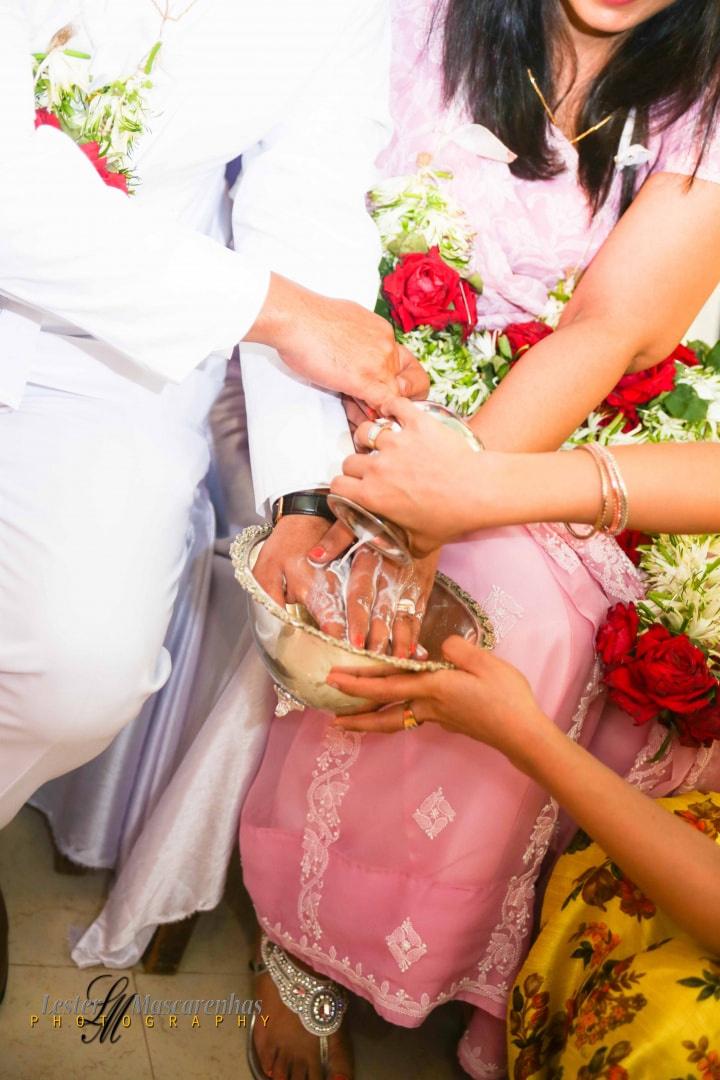
In this customary cleansing ritual, the bride’s sister helps the groom clean his hands after the ceremony. . But before she does that, she unites the newly married couple by untying all the strings and in return for freeing them, the groom gifts her money.
Pag Dhovanu
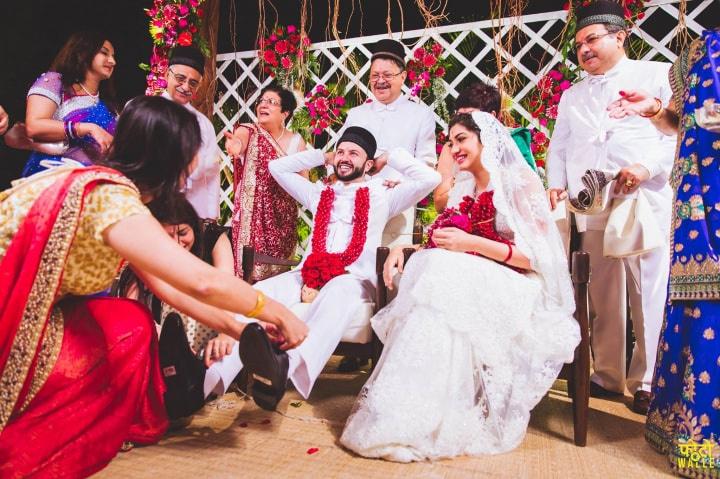
Hath Borvanu is not the end of the Masti with the groom. After the bride’s sister, it is her sister-in-law’s turn in the custom of Pag Dhovanu where she playfully threatens the groom to spill milk on his shoes and the only way for him to save his shoes is to gift her money.
A visit to the Fire temple
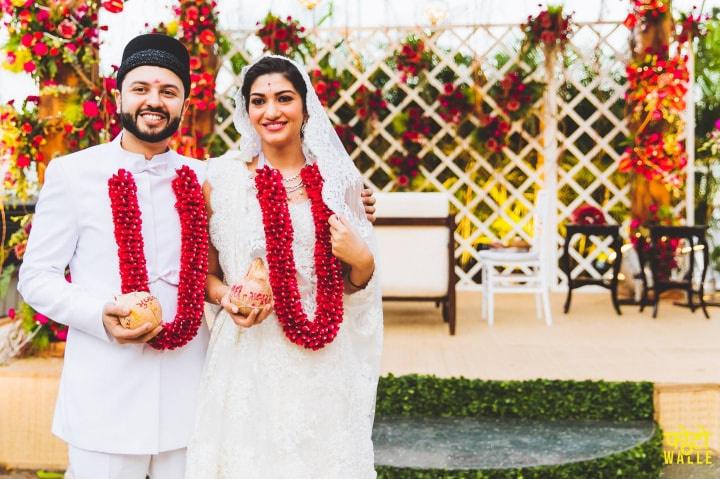
After completing all the rituals and customs, the bride and the groom exit the red and white stage and head to the fire temple to seek almighty’s blessings.
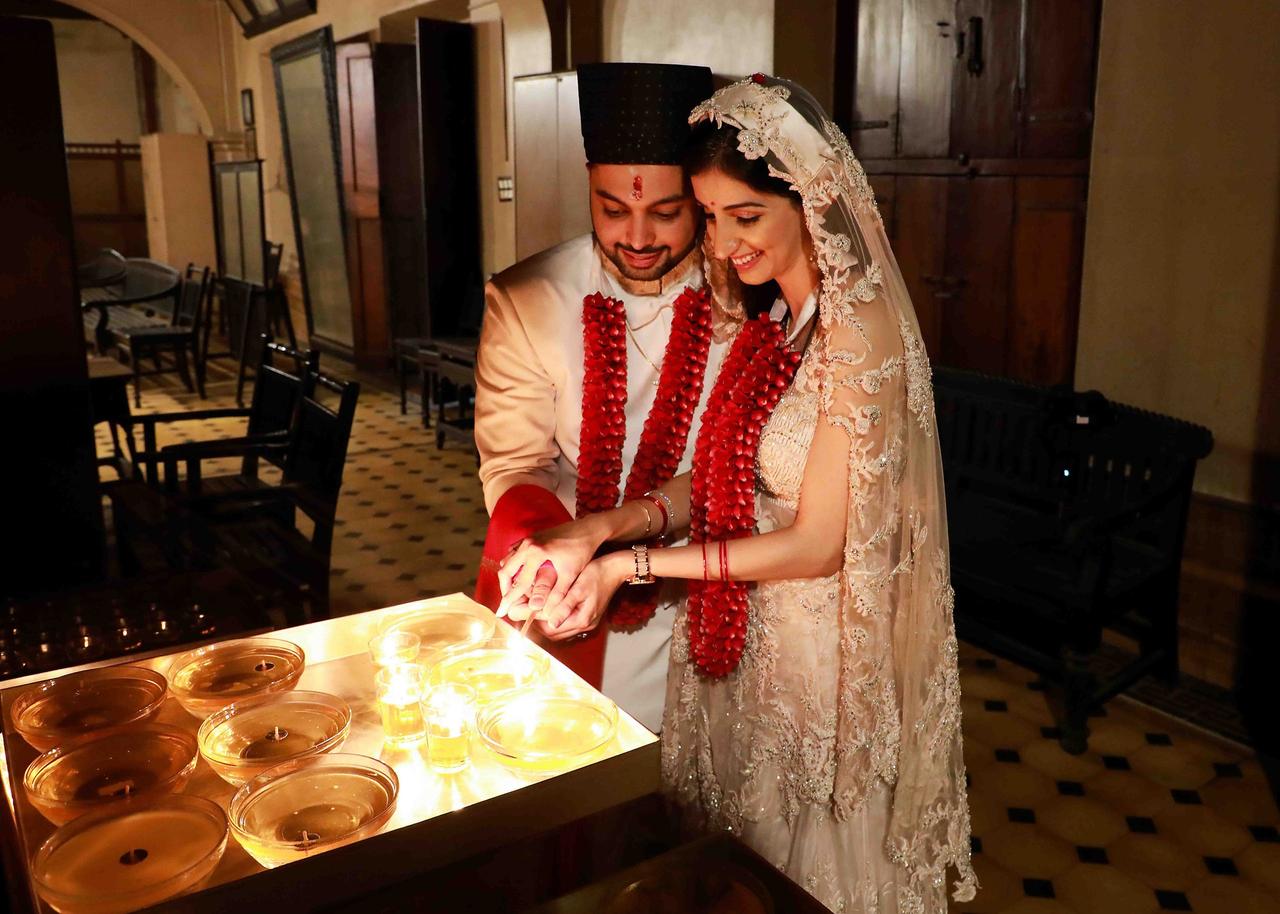
Image Courtesy: Parinaz Irani
The oil lamps that were lit on either side of the bride and the groom during the wedding ceremonies are put out by placing a rose flower on the flame.
Wedding reception
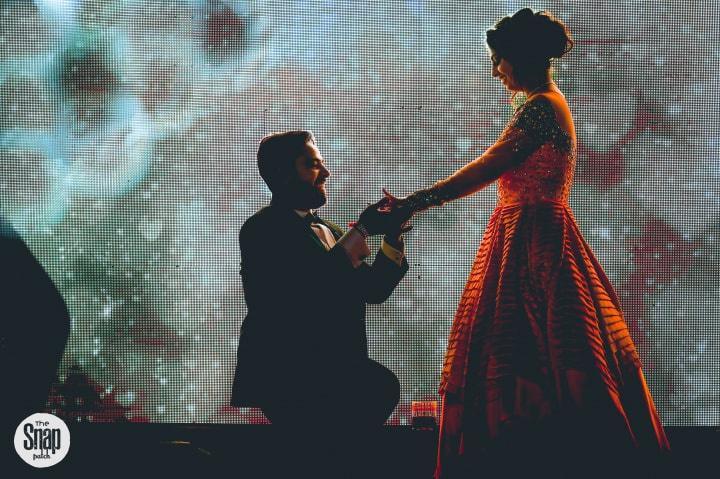
The reception of the couple after the ceremonies is a grand event in a Parsi wedding. That is where the real fun is, with music and dancing going all through the night. The couple is invited on the dance floor for their ‘first dance’, after which all their friends and family join in to make merry.
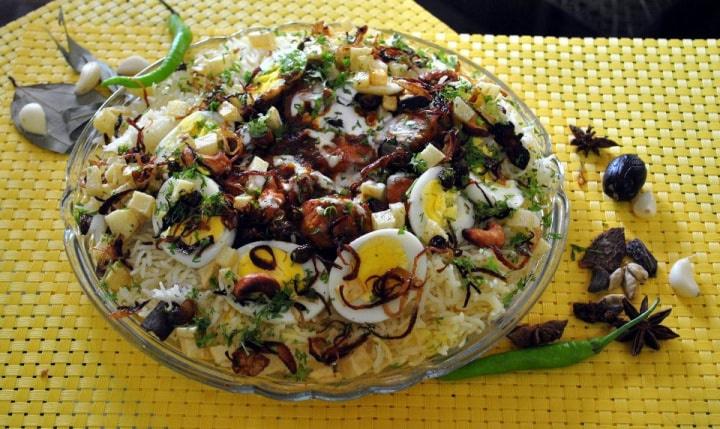
As the night progresses delectable Parsi food like Sali-na-gosht, Patra-ni-machhi, Pulao-dal, Alima-murgh fills in the aroma. The bride and groom are served on one plate and are asked to eat their first meal together as a couple, this is the custom of Dahikoomron. There is a very significant custard called Lagan-nu-custard that is served at every Parsi wedding - it is a custard that is only served at weddings and hence the name.
The night comes to an end when the newlywed couple leaves the venue for the groom’s house where his mother awaits them and performs the Achu Michu ceremony once again to welcome them to their home.
In contrast with Marwari wedding traditions, Punjabi wedding traditions or Maharashtrian wedding traditions, the simple Parsi wedding customs seem one-of-a-kind. But don’t be fooled by the simplicity of it, a Parsi wedding is full of zeal and passion with an extra dose of fun during the rituals. Plan your wedding today.
Which of these is your favourite aspect of a Parsi wedding? Let us know in the comments below!
-With valuable inputs from Parinaz Irani.



